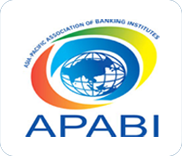About Mumbai
 Mumbai was named an alpha world city. It is also the wealthiest city in India, and has the highest GDP of any city in South, West or Central Asia.
Mumbai was named an alpha world city. It is also the wealthiest city in India, and has the highest GDP of any city in South, West or Central Asia.
India is one of the oldest civilizations in the world with a kaleidoscopic variety and rich cultural heritage. It has achieved all-round socio-economic progress during the last 67 years of its Independence. India has become self-sufficient in agricultural production and is now one of the top industrialised countries in the world and one of the few nations to have gone into outer space to conquer nature for the benefit of the people. It covers an area of 3,287,590 sq. km., extending from the snow-covered Himalayan heights to the tropical rain forests of the south. As the 7th largest country in the world, India stands apart from the rest of Asia, marked off as it is by mountains and the sea, which give the country a distinct geographical entity. Bounded by the Great Himalayas in the north, it stretches southwards and at the Tropic of Cancer, tapers off into the Indian Ocean between the Bay of Bengal on the east and the Arabian Sea on the west.
Lying entirely in the northern hemisphere, the mainland extends between latitudes 8° 4' and 37° 6' north, longitudes 68° 7' and 97° 25' east and measures about 3,214 km from north to south between the extreme latitudes and about 2,933 km from east to west between the extreme longitudes. It has a land frontier of about 15,200 km. The total length of the coastline of the mainland, Lakshadweep Islands and Andaman & Nicobar Islands is 7,516.6 km.
GEOGRAPHY
Location:
The Indian peninsula is separated from mainland Asia by the Himalayas. The Country is surrounded by the Bay of Bengal in the east, the Arabian Sea in the west, and the Indian Ocean to the south.
Geographic Coordinates:
Lying entirely in the Northern Hemisphere, the Country extends between 8° 4' and 37° 6' latitudes north of the Equator, and 68°7' and 97°25' longitudes east of it.
Indian Standard Time: GMT + 05:30
Area: 3.3 Million sq. km
Telephone Country Code: +91
Border Countries:
Afghanistan and Pakistan to the north-west; China, Bhutan and Nepal to the north; Myanmar to the east; and Bangladesh to the east of West Bengal. Sri Lanka is separated from India by a narrow channel of sea, formed by Palk Strait and the Gulf of Mannar.
Coastline:
7,517 km encompassing the mainland,Lakshadweep Islands, and the Andaman & Nicobar Islands.
Climate:
The climate of India can broadly be classified as a tropical monsoon one. But, in spite of much of the northern part of India lying beyond the tropical zone, the entire country has a tropical climate marked by relatively high temperatures and dry winters. There are four seasons: i) winter (December-February) ii) summer (March-June) iii) south-west monsoon season (June-September) iv) post monsoon season (October-November).
Terrain:
The mainland comprises of four regions, namely the great mountain zone, plains of the Ganga and the Indus, the desert region, and the southern peninsula.
Natural Resources:
Coal, iron ore, manganese ore, mica, bauxite, petroleum, titanium ore, chromite, natural gas, magnesite, limestone, arable land, dolomite, barytes, kaolin, gypsum, apatite, phosphorite, steatite, fluorite, etc.
Natural Hazards:
Monsoon floods, flash floods, earthquakes, droughts, and landslides.
Geography–Note:
India occupies a major portion of the south Asian subcontinent
PEOPLE
Population:
India's population, as on 1 March 2011 stood at 1,210,193,422 (623.7 million males and 586.4 million females).
Religions:
According to the 2001 census, out of the total population of 1,028 million in the Country, Hindus constituted the majority with 80.5%, Muslims came second at 13.4%, followed by Christians, Sikhs, Buddhists, Jains, and others.
Languages:
There are 22 different languages that have been recognised by the Constitution of India, of which Hindi is an Official Language. Besides these, there are 844 different dialects that are practiced in various parts of the Country.
Literacy:
According to the provisional results of the 2011 census, the literacy rate in the Country stands at 74.04 per cent, 82.14% for males and 65.46% for females.
GOVERNMENT
Country Name: Republic of India (Bharat Ganrajya)
Government Type: Sovereign Socialist Democratic Republic with a Parliamentary system of Government.
Capital: New Delhi
Independence: 15th August 1947 (From the British Colonial Rule)
Constitution: The Constitution of India came into force on 26th January 1950.
(Source: India.gov.in National Portal of India)

